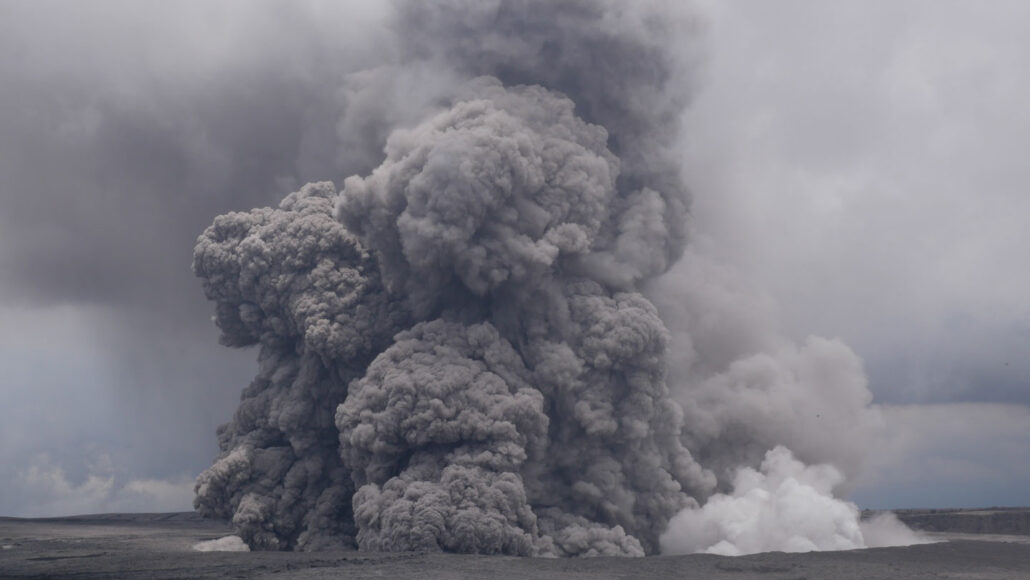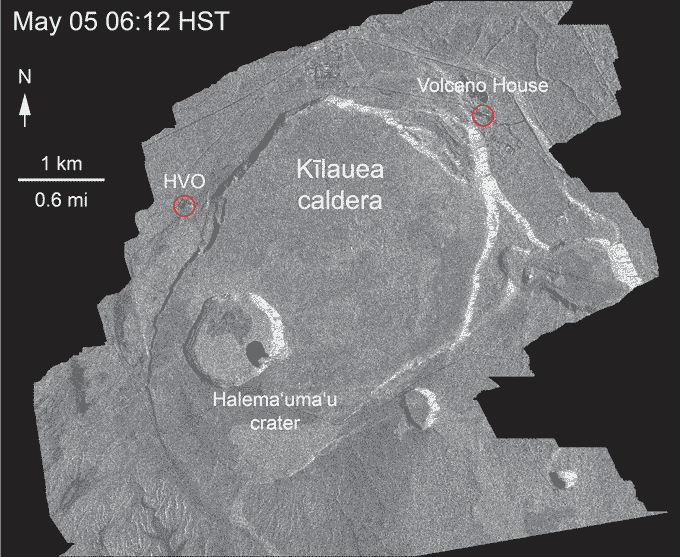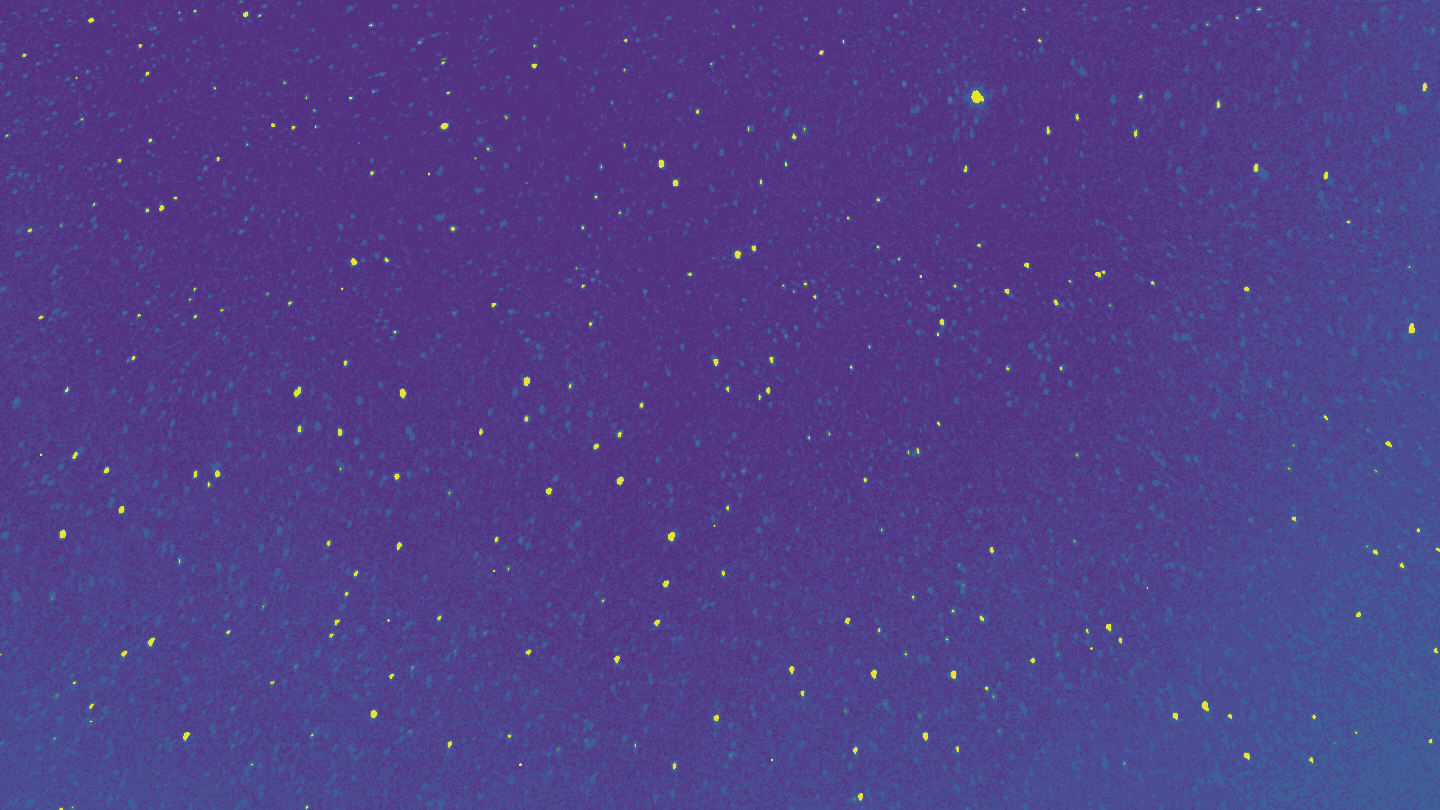Hawaii’s Kilauea volcano recently erupted like a stomp rocket
This appears to mark a new type of volcanic eruption

Unusual explosive eruptions rocked Hawaii’s Kilauea volcano repeatedly in May 2018 (including here, on May 27). A newly described type of eruption — like a stomp rocket — now appears to explain the volcano’s novel activity.
Hawaiian Volcano Observatory, USGS
A never-before-seen type of eruption explosively blasted debris high into the sky from Hawaii’s Kilauea volcano in 2018. It wasn’t one big ka-pow! Kilauea had been erupting lava. Then a series of 12 strange blasts occurred over a span of 11 days. These blasts sent gas, ash and rock eight kilometers (five miles) into the air.
Scientists now liken those blasts to the action of a stomp rocket. That’s a toy propelled from a launch pad as somebody stomps on a pocket of air, suddenly compressing it.
It’s unlike the two well-known processes that trigger most volcanic explosions, notes Joshua Crozier. He’s a geophysicist at Stanford University in California. He also was lead author of the new study.
One standard process is a sudden release of pressure as hot magma moves up pipe-like channels from underground. The magma contains bubbles of gas. As they expand, molten rock will blast out the top of the crater. Most other explosions arise when a rising plume of magma flash-heats groundwater pooled in some of the volcano’s rocks. This will shoot steam and broken bits of rock skyward.
But neither such process seems to explain what happened at Kilauea six years ago.
Instruments near the volcano’s summit collected data as it blew its top again and again between May 16 and May 27, 2018. Those data now suggest the strange sequence of explosions were due to something scientists had never noticed before.

Educators and Parents, Sign Up for The Cheat Sheet
Weekly updates to help you use Science News Explores in the learning environment
Thank you for signing up!
There was a problem signing you up.
For one thing, the erupted material didn’t contain bubbly bits of magma. That’s what you’d expect from the first process, Crozier says. And rocks in the caldera were already far too hot to contain much liquid water. That eliminates the second scenario.
Instead, it seems large chunks of the crater’s rock fell down into the chamber of magma below. Each drop suddenly compressed air in the magma chamber. This must have sent volcanic debris shooting skyward, Crozier’s team now argues.
They liken this to the way stepping hard on the air bladder of a stomp rocket sends its foam projectile flying.
Crozier’s team described this novel volcanic action May 27 in Nature Geoscience.
Instruments documented telltale activity
A falling of the “roof rock” at the volcano’s summit appears to have smooshed magma in the chamber below. Such a collapse of the crater’s rock is known as subsidence. And this collapse didn’t happen all at once. There were a series of successive drops. Each likely triggered another explosive burst.
Almost as soon as the eruptions began, Crozier and others began suspecting these bursts traced to those collapses in the volcano’s caldera. To confirm their hunch, the team pored over abundant data that has been continuously collected at the site.
Kilauea is one of the most extensively instrumented volcanoes in the world. Networks of seismometers keep close watch on Kilauea’s inner workings. Meanwhile, GPS-armed tiltmeters near its summit record subtle changes in the movement and slope of the ground. This tracks how magma moving below strains the rock.

The Hawaiian Volcano Observatory also has a network of microphones that pick up frequencies below what the human ear can hear. These infrasound rumblings pointed to changes in air pressure. Some were likely caused by explosions.
Changes in the frequency of infrasound waves moving through the ground revealed a distinct pattern during May 2018. They suggest the chamber would enlarge, after which there would be an explosion. Seismic waves, meanwhile, showed a series of distinct earthquakes. Each was less than a magnitude 5 in intensity. These, too, were linked to the explosions.
What likely happened, the researchers say, is that the magma chamber drained enough to make its rocky roof unstable. This let that ceiling rock fall under its own weight. The falling rock suddenly compressed air above the magma — like compressing a stomp rocket’s air bladder. Some 10 to 30 seconds later, cameras observed the summit shooting hot gas and rock up and out of the magma chamber.
Kilauea is likely not unique
“This is the first time, to my knowledge, that such a mechanism has been suggested to drive eruptions,” says Larry Mastin. He works at the U.S. Geological Survey’s Cascades Volcano Observatory in Vancouver, Wash.
Mastin did not take part in the new analyses. But as a volcanologist, he understands what can go on in and around magma chambers. What’s being reported is “a rather unusual mechanism,” he notes. “But the circumstances of this eruption are unusual.” And unusually good monitoring proved “very useful in helping narrow down the cause.”
The stomp-rocket mechanism only affected the very early stages of Kilauea’s summit collapse, Mastin says. That was basically when “the roof [was] falling in right above the magma.” Over time, as the collapse in the caldera floor’s radiated outward, the tightly focused stomp-rocket compression ended. And that largely stopped the eruptions as debris clogged the vent in the central caldera.
Do you have a science question? We can help!
Submit your question here, and we might answer it an upcoming issue of Science News Explores
Stomp-rocket-style eruptions probably aren’t unique to Kilauea, Crozier says. The volcano’s extensive monitoring just made it especially easy to detect the new phenomenon, he says. Knowing how to link seismic and infrasound data may one day help mitigate hazards elsewhere, he says — at volcanoes with far less instrumentation.
“In many cases, the first sign we have of an eruption is a seismic or infrasound signal,” Crozier says. The better that science gets at relating such data to what the erupting plume is doing, he says, “the better we can calibrate our models.” And that, he says, could help warn of upcoming explosive risks.







